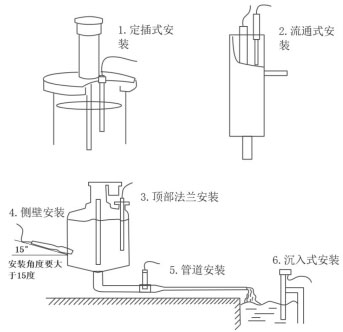Meteorological environment monitoring equipment supplier
Insist on doing high-precision customer favorite technology products

one.Self-cleaning Turbidity Sensor working principle
Self-cleaning Turbidity Sensor is measured by 90° scattering method, which is not susceptible to interference from ambient light and has better repeatability and stability.The Self-cleaning Turbidity Sensor determines the concentration of particles in a liquid by measuring the scattering of light.It uses a light source to shine into a liquid and then measures the scattered light intensity at different angles.This sensor uses the 90° angle scattered light method to linearly process the collected values, and outputs turbidity values through a temperature compensation algorithm.
two.Self-cleaning Turbidity Sensor technical parameters
| Measurement principle | Scattered light method (optional from cleaning) |
| Measuring range | 0~40NTU 0~1000NTU 0~3000NTU |
| resolution | 0.1NTU |
| Accuracy | ±1%, ±0.3℃ |
| temperature compensation | Automatic temperature compensation |
| Output mode | RS-485 (Modbus/RTU) |
| Storage temperature | -5-+65℃ |
| working environment | 0~50℃, ≤0.2MPa |
| Installation method | Submersible installation, 3/4NPT mounting thread |
| Cable length | 5m |
| Power consumption | 12V power supply: When the cleaning brush is not working, the product power consumption is about 0.5W; when the cleaning brush is working, the product power consumption is about 1.5W |
| powered by | DC: 12V-24V |
| Protection level | IP68 |
| Calibration method | Two point calibration |
| Shell material | ABS+metal |
three.Self-cleaning Turbidity Sensor Dimensions/Installation
1.Self-cleaning Turbidity Sensor Dimensional Chart

2.Wiring diagram
The cable is a 4-core shielded wire:
Red - power cord blue/black - ground wire green - 485B yellow - 485A
Depending on the production batch, the color of the cable may be slightly different.Please refer to the cable screen printing for details.
3.Self-cleaning Turbidity Sensor installation

Four.Self-cleaning Turbidity Sensor care and maintenance
Sensor maintenance:
If the sensor needs to be cleaned, use warm water and an appropriate amount of detergent to clean it.
Notice:
Avoid strong vibrations that may damage the transparent glass in front of the ring, and do not scratch it with hard objects.